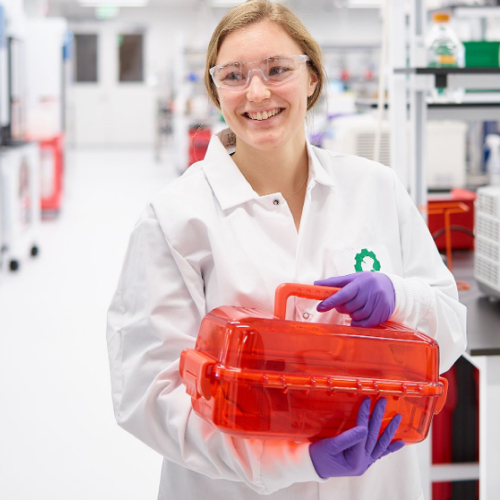Today, Ginkgo closed our deal with Bayer, expanding our ag biologics division.
As a result of the close:
- The nitrogen fixation and R&D platform assets of Joyn Bio are now integrated into Ginkgo.
- Bayer’s West Sacramento Biologics Research & Development site and platform is now a part of Ginkgo’s ag biologics division.
- Ginkgo becomes a multi-year strategic partner with Bayer to develop biological solutions in areas such as nitrogen optimization, carbon sequestration, and next generation crop protection.
- Bayer will continue work to optimize Joyn Bio’s nitrogen fixation technology, aiming to complement synthetic fertilizers going forward.
Today we’re pleased to announce the beginning of our multi-year strategic partnership with Bayer to accelerate research and development of biological products for agriculture. The transaction includes the divestment of Bayer’s West Sacramento Biologics Research & Development site and its internal discovery and lead optimization platform; these assets are now integrated into Ginkgo.
Through this deal, the nitrogen fixation and R&D platform assets of Joyn Bio—the joint venture created by Bayer and Ginkgo Bioworks in 2017—will be fully integrated into Ginkgo. This will enable the continued advancement of Joyn Bio’s innovative nitrogen fixation platform. As part of the agreement, Bayer retains the right to commercialize the technology to complement synthetic fertilizer use in the coming years.
Sustainable, climate-smart and innovative agricultural solutions
Bayer is now the first major partner of Ginkgo Bioworks’ expanded agricultural biologicals platform. The new collaboration will be focused on important programs in the areas of crop protection, nitrogen fixation, and carbon sequestration to identify next generation biologicals that provide clear benefits to growers.
“Biological solutions play a critical role in the agricultural innovation ecosystem, and we see tremendous opportunity for these products to add even more value for agriculture in the future,” said Dr. Robert Reiter, Head of R&D at Bayer’s Crop Science Division. “[Bayer’s] open innovation approach will accelerate the product pipeline and will make sure that we bring high-quality biological solutions and innovative technologies to the market faster.”
Microbial derived products for agriculture
Here at Ginkgo, we’re committed to harnessing the power of programmable biology to enable sustainable food production and food security worldwide. We aim to develop and advance agricultural microbial solutions across crops and geographies through broad, fully-enabled technical platforms that address diverse market needs. We will work independently with different partners in the discovery of microbial derived products for agriculture.
We look forward to partnering with Bayer and other innovative companies to bring more applications on to Ginkgo’s expanded agricultural biologicals platform so that growers worldwide can develop breakthrough products.
What will you grow with Ginkgo?
Find the full press release here along with all of the latest news from the Ginkgo team.
This blog post contains certain forward-looking statements within the meaning of the federal securities laws, including statements regarding Ginkgo’s expectations regarding its ability to expand its platform capabilities in agricultural biologicals through the transaction and the expected outcomes and benefits of the transaction. These statements are subject to risks and uncertainties as described in the “Risk Factors” section of Ginkgo’s quarterly report on Form 10-Q filed with the U.S. Securities and Exchange Commission (the “SEC”) on August 15, 2022 and other documents filed by Ginkgo from time to time with the SEC. Actual events and results could differ materially from those contained in the forward-looking statements.
